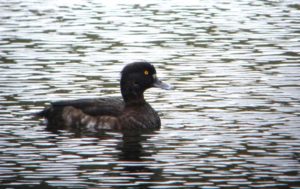After all the hard work in the early part of the year it is time to start enjoying our gardens, ease back a little and take time to look around, spend some time just relaxing and taking in the glorious summer. It’s also a time when small posters advertising our local shows start to appear in local supermarkets and community notice boards, as the gardening show season starts to approach. Take a note of the dates and pop along to enjoy the displays and more importantly the enthusiastic gardeners who are so keen to help you with your gardening conundrums. Most of the Gardening Clubs and Allotment Societies have events that provide support and encouragement for those developing an interest in gardening and can offer sources of information about where to get the best deals for seed, compost and all things gardening.
I am often asked about what to do with an overgrown Lavender plant as they are often left to their own devices and seem to become straggly and woody in only a few years. The key is to prune them, although they are one of those plants that do not recover well if they are pruned too hard. I prune my lavender twice per year, the first just after the flowers fade. I cut the flower head stalks back choosing a green shoot about 25 – 50mm (1 – 2 inches) past the end of the flower stalk. this encourages the plant to produce more shoots and keeps them more compact. The second pruning I do in March again selecting the new spring growth and pruning back about 25 – 50mm (1 – 2 inches) from the growing tip, you can thin out the stems by up to one third cutting these hard back to the main stem. This method will encourage the plant to shoot from below and keep a compact form. I also feed with an organic chicken pellet fertiliser in April to give them a boost. There are two good compact varieties that I have grown for a number of years Lavendula angustifolia ‘Munstead’ and L. a. ‘Hidcote’.
While you have the secatures out it’s time to take a look at your fruit trees and bushes. Scary though it may seem pruning is something that gets easier with practice, and in my experience plants can be quite forgiving and generally will recover from a bad haircut!
The trend to grow apples, pears and and other what we call tree ( or top ) fruit as trained plants, cordons, espaliers and fan trained means that in order to keep them compact and fruiting they require summer pruning, although cherries and plums are best left until next spring. Apples and Pears grown a trained fruit will produce long stems of new growth from a cluster of buds on the main stem we call ‘spurs’. These are the points where flowers and hopefully fruit will develop, the new long shoot is pruned back to one leaf from where they leave the spur. Shoots that are growing straight out from the tree trunk ( not from a spur) should be pruned back to four leaves, this will encourage the tree to produce spurs and eventually fruit. There are many good reference books around that show a step by step approach but if you are at all nervous then nip down to your local allotment site, there is bound to be someone who will be happy show you how they do it.
Turning our attention to soft fruit, strawberries, raspberries, black currants, gooseberries. With strawberries, if you do not plan to grow plants from runners, it’s good practice to remove the runners when they are about 10 – 15 cms (4 – 6 inches) long as this encourages the plant to build up a strong crown that will bear more fruit next year.
Summer fruiting raspberries are straight forward, tie in the new soft growths to your wire frame and once you have picked the fruit cut down to ground level the old fruiting canes. Don’t prune Autumn fruiting raspberries, this is done in late winter. Gooseberries, red and white currants, cut all new shoots back by one third, and finally black currants once you have harvested all the fruit select two or three of the older stems and remove them right back to ground level, this will encourage new growth and keep a cycle of replacement branches coming.
I’m always taking cuttings to replace exhausted herb plants and now is a good time to turn our attention to herbs such as sage, rosemary, bay and hyssop. I find heel cuttings work well from all these subjects, carefully remove a short stem about 75mm ( 3 inches) long, tearing them gently away from the stem, this is what we call a heel cutting. Dip the prepared cuttings in a hormone rooting powder, fill a 10cm (4 inch ) pot with a cutting compost and gently push the cuttings between the compost and side of the pot, water and place in a zip seal polythene bag. Place them in on a warm windowsill but out of direct sunlight and inspect them every two or three days. Once the shoots start to grow, leave the polythene bag open. When you see white roots emerging from the drainage holes of the pot they can be potted on into fresh compost and grown on prior to planting out next spring.
Happy gardening
Martin
(Autumn lawn care, choosing trees for a small garden, and planning next years vegetable garden)







